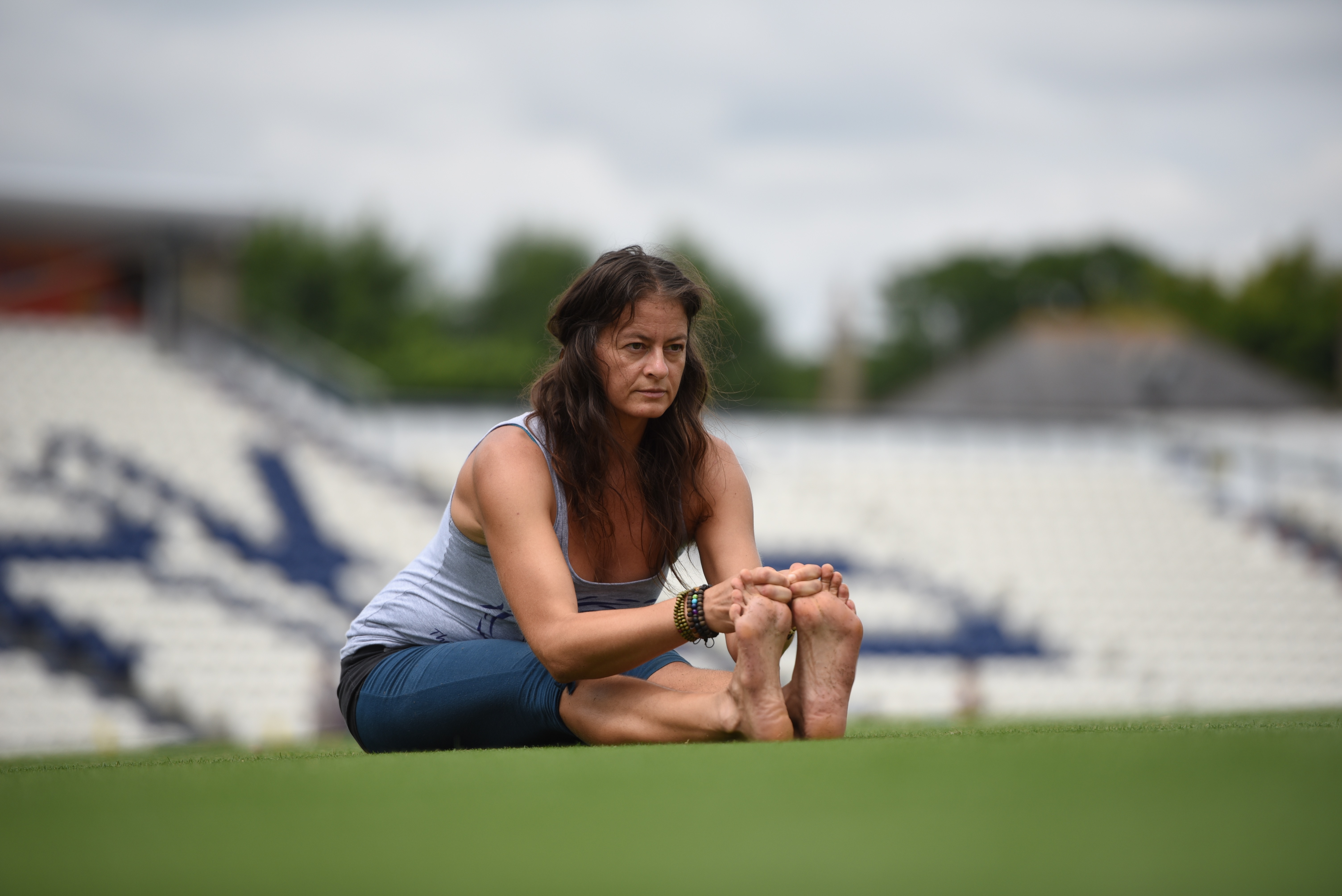Sanskrit words for common yoga poses
I work in the translation industry and find languages fascinating. When I started my yoga teacher training I was determined to learn the Sanskrit words for common poses but it wasn’t easy as the words seemed really long and very similar. However, as with any other language, learning the pose names just takes time and practice.
Some pose names are written as one long word, with all the separate elements pushed together – imagine this in the English name, Downwardfacingdogpose. Once you know how the name breaks down into the individual words, the Sanskrit becomes clearer.
Most pose names end in the word Asana. This means Pose or Posture and is pronounced aar-sen-er with the emphasis on the first syllable. The rest of the pose name denotes its shape or benefit. For example, Mountain Pose is Tadasana. Tada means Mountain and Asana means Pose. Similarly, Vrksasana is Tree pose: Vrksa means Tree and Asana is Pose. You will note that for both of these postures, there should be a double “a” in the middle i.e. Tada and Asana should be Tadaasana but the double “a” becomes just one.
Now let’s look at Standing Forward Bend. In Sanskrit this is Uttanasana. This is made up of three elements: Ut, Tan and Asana. We already know what Asana means so that just leaves Ut and Tan. You might think one means standing and one means forward bend but in fact Ut means Intense and Tan means Stretch so Uttanasana simply means Intense Stretch Pose. This might seem confusing but once you know the meaning of these three elements it will help with several other posture names such as Paschimottansana, Parsvottansana and Purvottanasana.
The first of these, Paschimottansana, is a Seated Forward Bend and is made up of Paschima and Uttanasana. We know what the last bit means already. Paschima means the West (as in the compass point) so Paschimottansana means “Intense Stretch of the West”. The West refers to your back so this is a back stretch.
You might have noticed that “Uttanasana” is written here as “Ottanasana”, and this highlights an interesting Sanskrit grammar rule: when A and U are written together they mutate to the single letter O. This pose is made up of Paschima and Uttanasana. So with this grammar rule in mind, when put together, Paschimauttanasana becomes Paschimottanasana. You will probably have already come across this rule in the mantra OM. This is really made up of A, U and M and is sometimes written as AUM, but applying the rule, AUM becomes OM.
Let’s look at one more posture, the common pose Down Face Dog. In Sanskrit this is Adho Mukha Svanasana: Adho (Downward), Mukha (Face) and Svanasana (Dog Pose). So if I tell you that Handstand is Adho Mukha Vrksasana, what do you think the Sanskrit for Handstand means? (See answer at the end.)*
I’ve listed below a few of the more common words that are used in several posture names:
- Pada – Leg or foot
- Sirsa – Head
- Eka – One
- Dvi/Dwi – Two
- Tri – Three
- Salamba – Supported
- Parivrtta – Revolved or twisted
- Parsva – Side or lateral
- Supta – Reclining
- Urdhva – Upward
- Adho – Downward
- Kon – Angle
- Baddha – Bound
To finish, here is a simple suggestion to help learn posture names. Create simple memory cards out of pieces of paper. Put the English pose name on one side and the Sanskrit equivalent on the other and then pick them up one at a time and try to name the pose in the other language. It’s a cheap and easy way to learn the words and you can test yourself anywhere at any time.
By Michelle Renno (editor of Namaste, South East Region British Wheel of Yoga magazine, reprinted with permission from the November 2018 edition, with a few additions to the word list at the end)
*It’s Downward Facing Tree!



